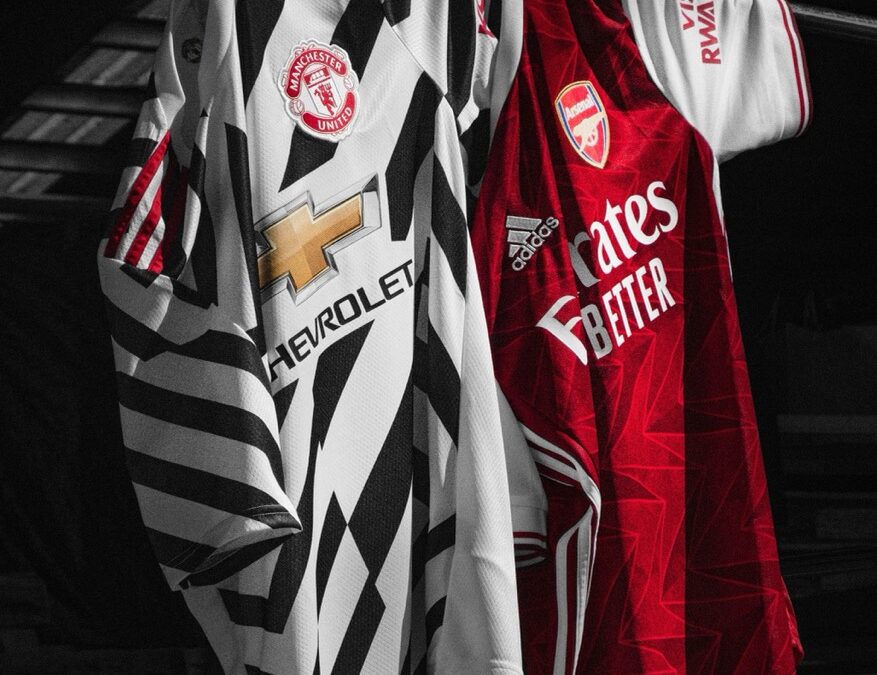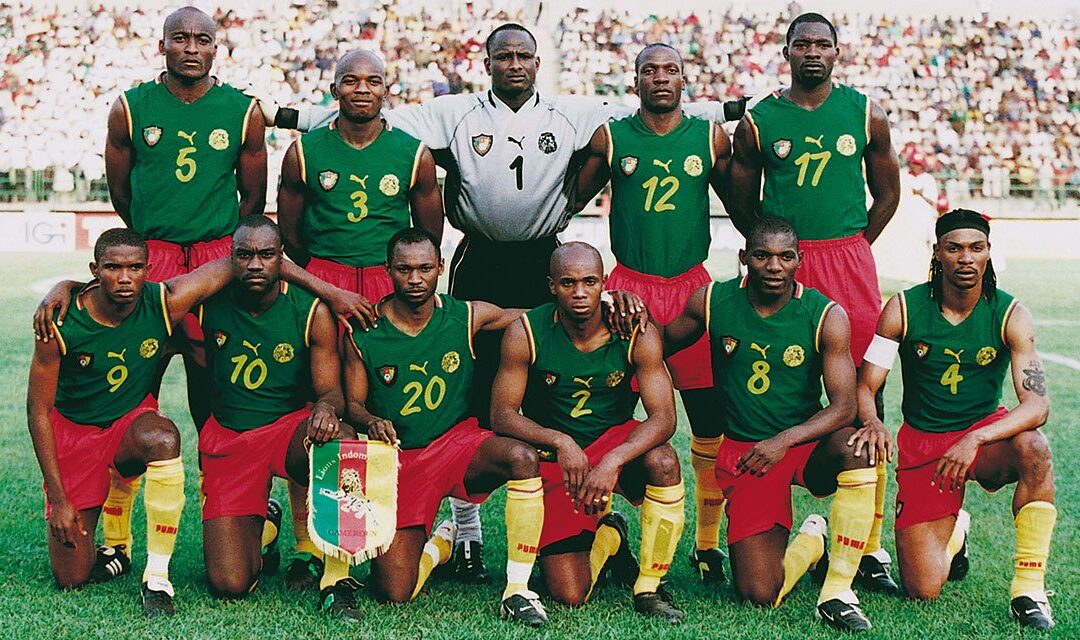The football shirt world has changed dramatically over the past couple of years, but this is part of a trend that has been going on for longer than that.
For a long time, replica football shirts were a rarity. Indeed, it wasn’t until the 1973-74 season that we saw them introduced into the world, when Admiral, in their first foray into sports manufacturing, sold replica Leeds United shirts to children for Christmas, selling out of their stock and lighting the spark for what would become a massive global industry.
This soon meant that the terraces at games looked very different, and for a long time, we’ve seen home and away ends alike full of shirts from across the years. In fact, according to Statista in 2024, 39% of surveyed football fans in Great Britain said they have bought a replica shirt.
This has been the case for a long time now, and it’s showing no signs of changing, with teams releasing third shirts, fourth shirts, commemorative shirts, one-off shirts, training ranges, Chinese New Year ranges… and much more. However, there is a way in which the sales of replica shirts has been changing over the past decade or so.
Before, looking around the UK, you probably saw plenty of local sides’ shirts. Maybe there was the odd Barcelona or Real Madrid shirt from when people had been on holiday and wanted a memento, or tourists wearing a shirt from their home country, but that was about it.
Nowadays, however, seeing a rare shirt from the Mexican 3rd division isn’t really an indicator that you’ve just spotted someone from Mexico, because there has been a huge rise in the number of people buying shirts that are nothing to do with their own club, their own country, and even shirts that they have no real connection to at all.
Just as fashionistas want the latest Steve Madden boots, or the viral ‘TikTok’ jacket, there are people all across the world that want the Ajax x Bob Marley shirt, or the commemorative Atletico Mineiro shirt with a map on.
This idea seemed to go mainstream in 2018, when the shirts for the World Cup in Russia were released. You probably know exactly which shirt I’m about to mention, such was its impact – the Nigeria home shirt, which had three million pre-orders, sold-out online and had people queuing outside a Nike store in London. That’s right – London. Not Abuja, not Lagos – London.
Since then, we’re starting to see bespoke kit designs popping up far more often in the EFL, such as with Umbro’s offerings – none of them are templates, and all of them are causing year-on-year increases in sales. This has also been the case with Hummel’s offering to sides such as Sunderland, or Coventry City, who have had some stand-out designs over the past six seasons.
One Coventry City fan, Louis Jones, has been a beneficiary of this trend. In 2021, he created a company called ‘Surprise Shirts’, which does exactly what it says on the tin – you pay for a box to arrive at your house, and you have no idea which football shirt is inside. You can give a general idea of what you might want, and suggest what you absolutely DON’T want – but generally, it’s a surprise. The company has had great success, and today has over 1,000 shirts to offer, from as far as places such as Malaysia or Anguilla.
But why would someone from the UK be at all interested in the possibility of opening up a random shirt, from a random country? Louis suggested: “We’re Coventry fans, we’re not going to wear a shirt from Bristol City or from Blackburn or from Arsenal because that goes against our tribe, that goes against our nature. You don’t want to associate with that because it is that tribal, it’s visceral, it’s passion.
“But if you have a shirt from a team in the fourth division in Thailand or the second division in Tanzania, that’s a completely different relationship because there’s no rivalry there, there’s no competition.
“It’s just the kind of mutual love of football that you share with this place that can be so many thousands of miles away. It’s got no insult to what you’re a part of here with your UK football club. It’s essentially just bringing people together from all corners of the globe through football, which is like a universal language that we all love.”
However, it’s not even necessarily about that type of connection for everyone that buys a shirt from a far-off country. Vogue named Lionel Messi’s Inter Miami replica shirts as one of the fashion items that ‘defined’ 2023, and it was worn by a number of celebrities and influencers, not just football fans. This shows that football shirts aren’t necessarily just about the teams for many people – it’s the design, the shirts themselves.
Football shirt collector Dan Ingham said that for him, and a lot of people he knows, it really is mostly about them looking good.
He said: “I started off with buying some cool shirts on Classic Football Shirts so that I’d stand out from the Newcastle and England shirts when I was playing five-a-side with my mates. I’d scroll through the pages of shirts they had, and would pick some that looked particularly cool.
“Nowadays, though, I don’t play football anymore, really. I’ve got over 200 shirts, and I’ve got some from every continent, and they’re just fashion items like clothes are to anyone else, really.
“I love the fact that they’re becoming more and more normal to wear in everyday settings at the moment, because that has made life so much easier for me! I used to be the only one at parties and family events, and even in Tesco, that was wearing a football shirt. They’re just a fashion item for me like anything else. I just like these more than other pieces of clothing, obviously!”
The idea that people just liked cool-looking shirts was added to by Louis, as well – and he suggested why these people are looking abroad for their next purchases.
He said: “If you look at what a standard traditional football shirt is in the UK, you know, there’s a set template. There’s a set of rules. It’s probably going to have one sponsor. You can predict what it’s going to look like? That makes buying shirts from the UK a slightly less exciting option.
“But if you take a football shirt in Mexico, in the lower divisions, you’re going to get ones that are plastered in sponsors. It’s so different: The colours are going to be brighter, there’s going to be fewer rules around the sponsorship and the way it can look. So you’re accessing something that you understand, but it’s going to be such a different take on that.”
One such shirt was that of Uprising FC, who are a team in Anguilla. Louis became the side’s Commercial Director and their shirts have, since then, become a global commodity for the first time, largely due to the company distributing them and due to them having a bespoke design.
They saw a 300% increase in their turnover in the first year of this switch in approach from the club, and we’ve seen a number of other smaller clubs across the world look to switch to bespoke shirts for the first time.
Is a global audience the main reason for every club adopting this approach, however?
Basingstoke Town, after a number of years having templated shirts from the likes of Macron, Joma and Nike moved to a new kit supplier called Hope and Glory in 2022, and have since had some striking designs.
Jack Miller, the chairman of the club, said that there was more to it, such as the fact that the new suppliers make shirts to order, but noted: “I think clubs are recognising the growing value of unique shirt designs from a fan perspective.
“There are rare times when a shirt can have mass wider appeal and with that can come lots more sales from non-Basingstoke fans. This is where the growing trend of where football shirts blend into fashion. Third kits or special edition kits are becoming tools to experiment a bit more into a wider market while still preserving colours/tradition in home/away kits.
“With Hope and Glory, we’ve sold more shirts than I’ve ever known us do before, and I think that’s down to the design and the ability to sell them worldwide. The bottom line for me is… shirt design is so important so that our fans resonate with them, while getting wider acclaim, either for being beautiful, or eye-catching, or a talking point, can be a bonus.”
So even if it isn’t necessarily the reasoning for clubs going bespoke, it’s clear that this is opening up more and more clubs’ shirts to a wider, often global, market, and it doesn;t look like this trend is going to change any time soon.
So, have you seen the new Venezia shirt? Chances are, you have, even if you didn’t know they existed a few years ago. It’s nice.
Featured image via Venezia FC



